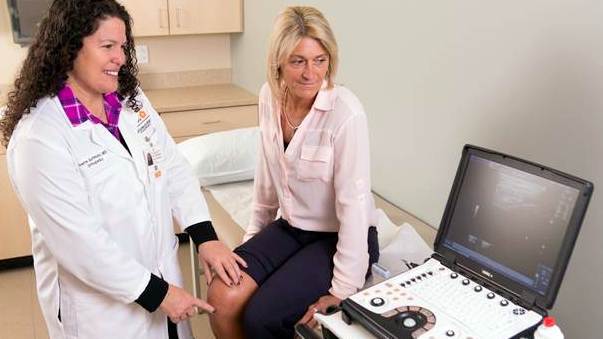

PRP: New Treatment for Osteoarthritis
For years, treatment options for osteoarthritis (OA) were rather limited: exercise, anti-inflammatory drugs, cortisone injections, physical therapy and, in extreme cases, joint replacement. But a new treatment option is showing great promise and offering much-needed relief to some sufferers.
Platelet-rich plasma, or PRP for short, has been found effective for reducing pain and increasing function in joints affected by osteoarthritis. Best of all, it uses your body's own resources and healing powers to create change.
In short, PRP therapy involves taking some of a patient's blood and running it through a high-tech centrifuge to extract platelets and plasma. The resulting mixture is the PRP and it contains a concentration of natural growth factors and healing proteins. Then, using guided ultrasound, the PRP is injected into the affected joint to stimulate tendon and muscle regeneration. The PRP then goes to work not only healing but also recruiting other growth factors and proteins to keep the healing process going.
As for results, a recent study found that patients who received PRP had significant pain reduction and improved physical function over the course of a year.
Another bonus, PRP is an easy treatment to receive, requiring only the initial blood draw and the follow-up injection, both accomplished in one visit. Side effects are minimal, generally just pain at the injection site. However, patients are asked to not take anti-inflammatories for a time period starting two weeks in advance of the treatment and extending until six weeks post-injection.
The one potential downside to PRP is that it's so new that it's not covered by insurance. Depending on the provider, costs can range anywhere from $600 to $1,200. It’s important to note that less-expensive treatments may not use state-of-the-art extraction equipment to create the PRP or guided ultrasound to place the injection. Because the quality of the PRP and the placement of the injection are key to the success of the treatment, it's worth asking your provider about the specifics of the treatment being offered. After all, and especially in the case of PRP, you get what you pay for. A few questions and a bit of research can ensure your money is well spent and your outcome the best it can possibly be.
While PRP won’t stop the progression of OA, it does have the potential to improve a patient’s quality of life and delay the need for invasive surgery.
Dr. Ivette Guttmann is a sports medicine physician who sees patients at SVMC Orthopedics in Bennington, Vt., Twin Rivers Medical P.C. in Hoosick Falls, N.Y., and Northern Berkshire Orthopedics in Williamstown, Mass.

Tags: SVMC,















